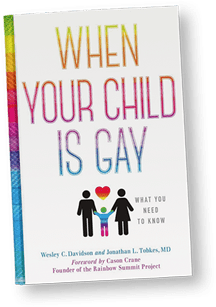What’s With LGBT- EXCLUSIONARY Sex Ed?
Why doesn’t sex ed in schools apply to LGBT students. Did you know that
in most states except California, Colorado, Iowa, Washington, and Washington, D.C., LGBT students waste their time in either abstinence-only or sex ed that only pertains to heterosexuals. LGBT kids sit in classrooms where their teachers and textbooks fail to be inclusive because their LGBTQ identities, behaviors, and experiences are not taken into consideration.
The GLSEN (Gay, Lesbian, Straight, Education Network) 2013 National School Climate Survey found that fewer than five percent of LGBT students had health classes that included positive representations of LGBT related topics. Of millenials surveyed in 2015, only twelve percent said their sex education classes covered same-sex relationships.
Because of this dearth of reliable information in school, LGBT youth turn to the internet or older peers that can both relay misinformation. Too embarrassed to talk to their parents, they are getting medically inaccurate material that can be misconstrued, built around myths that serve little purpose.
At the very least, LGBT-inclusive sex education should include positive examples of LGBTQ individuals, their relationships and families. It should also stress the need for sexual protection for everyone ( however, this shouldn’t excuse parents from talking to their children about these matters as well!).
Most Parents Want Sex Ed
The majority of parents polled (96%) want LGBT-inclusive sex education in high schools and ninety-four want it in middle school. Furthermore, The American Medical Association, The American Public Health Association, The Society for Adolescent Medicine, all endorse inclusive sex education.
In a study of more than 1,200 middle-and-high-school students across California, students who had inclusive sex education with positive images of LGBTQ identities, reported less sexual risk among teens and more support positive sexual health outcomes among teens that include: delaying the age of first sexual intercourse, reducing the overall number of sexual partners, unprotected sex, unintended teen pregnancy, and HIV rates and other STIS.
In schools whose sex ed classes are inclusive, LGBT students were bullied less. These inclusive students also felt that they belonged and consequently felt safe at school.
What Can Parents Do?
Gather your friends and demand inclusive sex education. This summer is a good time to start. Get it on the school calendar for fall. Speak to school health advisory committees such as SHACS for curriculum choices, school boards, and school administrators. You can order kits from Advocates for Youth and GLSEN LGBTQ-inclusive Curriculum Guide for Educators and lesson plans on bullying, bias, and diversity to start.
Write, speak to federal, state, and local policy makers who can remove gaps in sex education classes. They can also support funding for effective sex education and resources for teacher training program evaluation and research.

When Your Child Is Gay: What You Need To Know
For more detailed advice, see book, co-authored with a mother of a gay son and a psychiatrist, Jonathan L. Tobkes, M.D.